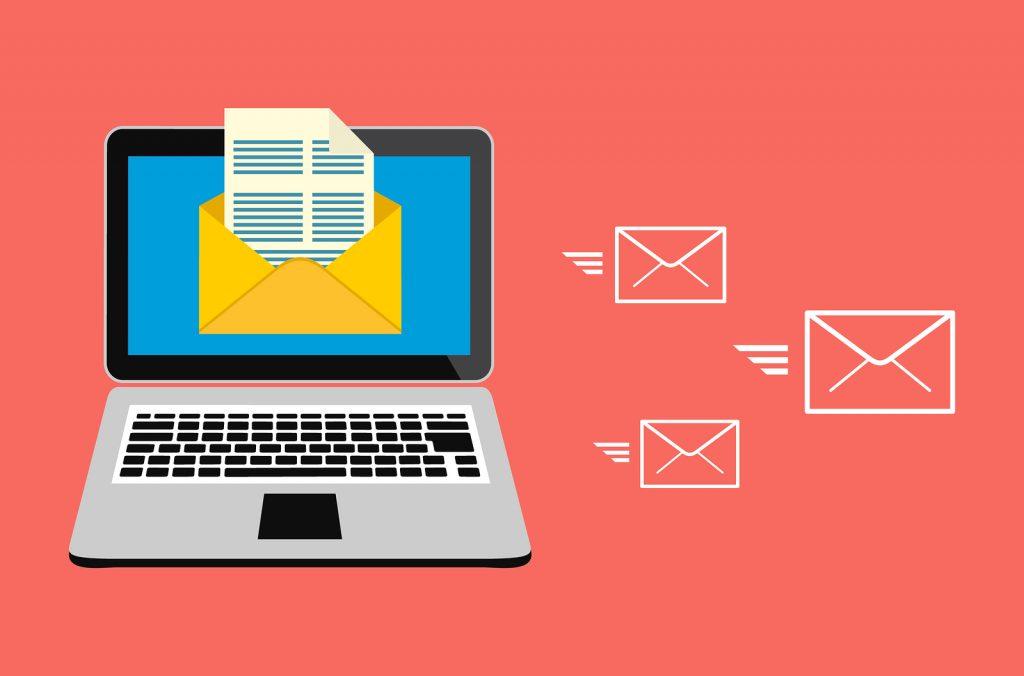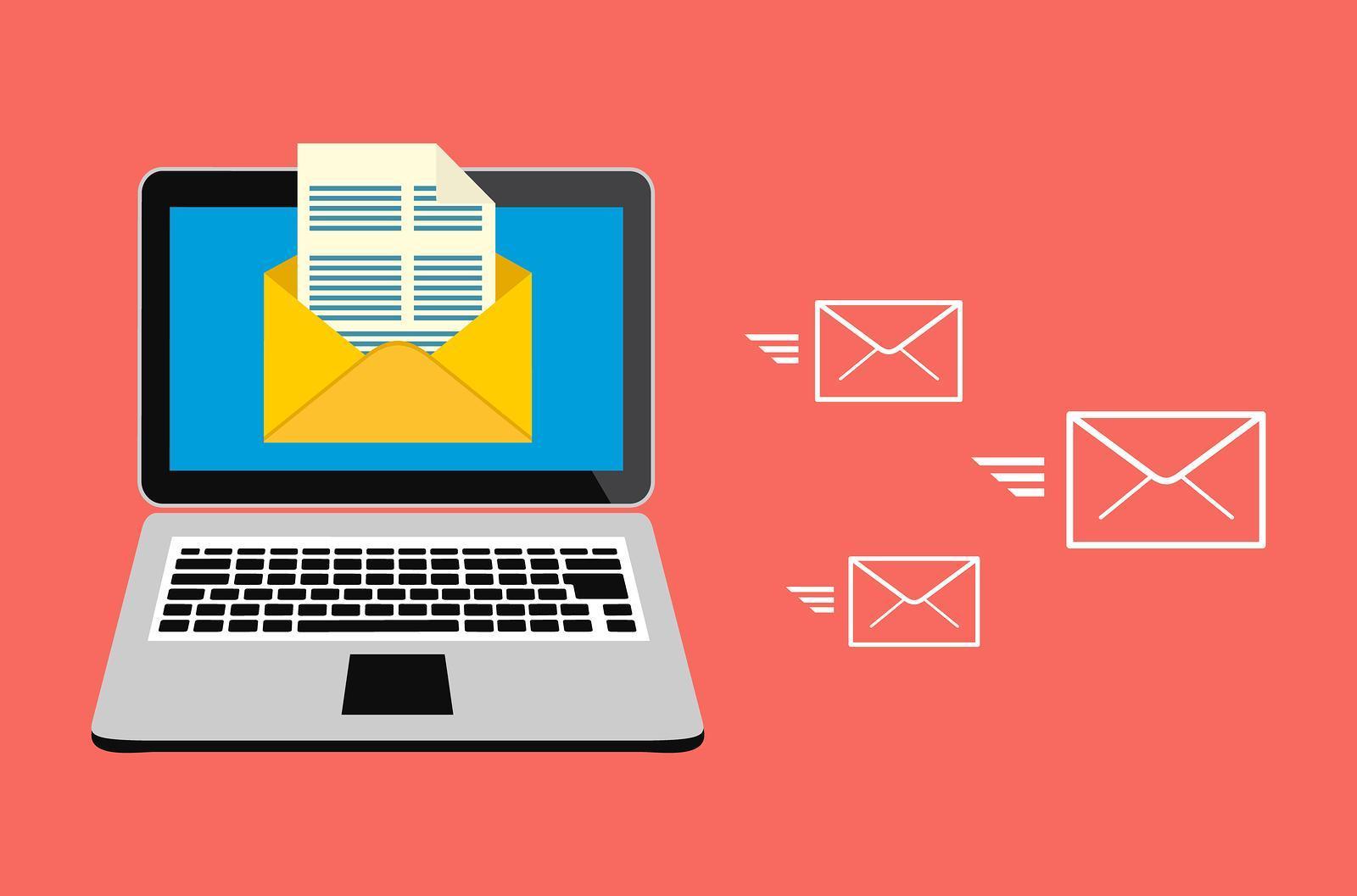48 years ago the first ever electronic mail was constructed and distributed by Ray Tomlinson, an American computer programmer.
Such a tremendous feat, bearing such an underwhelming iota of copy – Ray said he couldn’t remember exactly the contents of the email, however it probably contained either: “Test123” or “QWERTYUIOP” – has massively imprinted digital marketing strategies, so much that 2019 is set to be the year of the email for advertisers.
Why so?
Well firstly because it’s a great way of resonating with the masses. According to a study conducted by HostPapa “94% of Internet users use email, while only 61% use social media.”
It’s more profitable for businesses too, with stats that reveal “email marketing has a median ROI of 122% over 4x higher than social media, direct mail and paid search.”
And it’s cost effective. For a small charge of £7.66 per month, businesses can target 500 recipients – subscribers who have already engaged with your brand – and distribute unlimited emails across a 4-week period.
This differs from inputting £7.66 into a social advert, which would only comprise of one single post and would be restricted in terms of audience size and reach.
Lastly, the costs, time and effort required to upskill staff or outsource a freelance marketer is non-existent. This is because anyone with access to a computer (dogs not included) can construct and design a newsletter template; the process is basic, yet the potential effects can be behemoth. Distributing email campaigns, also means you’ll never need to face Facebook’s overly complex Ad Manager or Google Analytics’ tediously confusing UI again.
It makes sense that advertisers are turning to email campaigns to promote their services. As unlike marketing via social channels, email campaigns are contented to, targeted and offer value for both business and consumer.
See below for ways to elevate your marketing campaigns. By modifying your e-blast strategy, your campaigns can effectively boost customer and brand loyalty, target the right audiences and return impressive conversion rates at a small cost.
Tailored campaigns
Through Mailchimp businesses can employ triggers of which deliver reactive e-blasts to consumers dependent on their behaviour. This means that emails can be personalised in response to consumers’ actions. Personalised e-blasts have much more reactiveness than generic one-type-fits-all campaigns.
Campaign activity
If consumers have or have not opened a campaign then their follow-up email will differ depending on how they’ve reacted. This also applies for if a consumer clicks on a link or ignores it. Through analysing how consumers behave towards your campaign, you can effectively alternate your strategy to influence more consumers to engage in the future.
List management
A trigger can also be employed for when consumers are added to a new list within Mailchimp. This is handy for if a consumer subscribes to a service that differs to a standard service that your business offers. By result, they will be put into a separate segment within your database list and automatically emailed – this could come in the form of a welcome email.
List segmentation is a great way of delivering specific messages to different audience sectors.
Workflow activity
This trigger is a sort of follow-up trigger that comes in response to a consumer’s campaign activity. An automated email is distributed after a subscriber responds to an email campaign, such as opening, receiving not opening or clicking on a link.
Ecommerce
After a consumer purchases any product, a specific product, hasn’t purchased a product in a while, has exhibited interest or has abandoned an item after putting it in their cart, then a trigger will incur, delivering an automated email to the consumer, influencing them to reconsider their purchase, or shop more!
According to statistics produced from the National Client Email “over 75% of email revenue is generated by triggered campaigns, rather than one-size fits all campaigns.” Reactive e-blasts enables you to customise your marketing approach to avoid spamming consumers with repetitive messaging of which can influence them to unsubscribe.
Value
Deliver value to your consumers, and turn a one-purchase customer into a loyal shopper. By simply providing relevant post-purchase tips to consumers – such as recipes, product care advice or ways to display a product – you can influence consumers to not just read your content, but enjoy it and await further upcoming content from you.
Rewards
Implement discount codes or money-off incentives into e-blasts. This rewards consumers on a personal level, and influences higher conversion rates than a generic discount code being distributed to the masses via social media. Personal rewards encourage consumers to spend – use their discount code – and to continue shopping in the future, to rack up even more rewards.
Call to action
Slip in a call-to-action prompt in an e-blast. This influences consumers to fulfil an action – e.g. shop tickets, products or a discounted service, that is available for a ‘limited time only’ – through a less pushy approach. Hard-selling a product or service can dissuade consumers, as can a heavily marketed advert across Google.
Has your business underestimated the potential of email campaigns? Or oppositely, have you been successful through employing email campaigns into your marketing strategy? Comment below with your experiences.





Leave a Reply